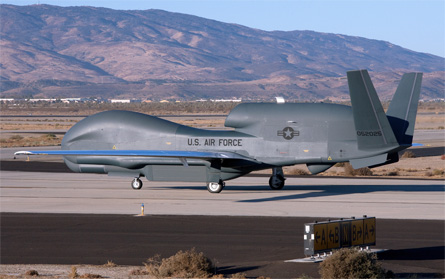The US Air Force has slashed planned orders for one variant of the Northrop Grumman RQ-4 Global Hawk by half to fix problems on another version of the high-altitude, long-endurance unmanned aircraft system.
The Block 40 programme, featuring a synthetic aperture radar, is “truncated” from 22 to 11 aircraft, says Maj Gen Alfred Flowers, the air force’s deputy assistant secretary for budget.
“We are using the savings to make capability improvements in the Block 30,” Flowers says, adding “in the area of electro-optical/infrared” payload.
Each version of the RQ-4 has faced cost increases and performance problems.
The Block 30’s EO/IR payload is the Raytheon enhanced integrated sensor system. Last March, flight tests revealed “significant” deficiencies with the sensor’s image quality, according to the latest annual report published by the Pentagon’s office of test and evaluation.
As a result, the air force deferred some capabilities, including ground moving target detection, sensor resolution quality and imagery-derived target geolocation for the Block 20 and Block 30 variants, the report said.
 |
|---|
© Northrop Grumman |
The new decision is a severe blow for the Block 40 variant, which also carries the Northrop Grumman/Raytheon multi-platform technology insertion programme radar.
Both the Block 40 and the Northrop E-8C joint surveillance target attack radar system aircraft perform a similar mission – detecting targets moving on the ground.
The USAF decided that 11 Block 40s providing two combat air patrols, as well as the E-8C fleet, “is sufficient to meet our requirements,” says Marilyn Thomas, principle deputy air force controller.
Source: Flight International























